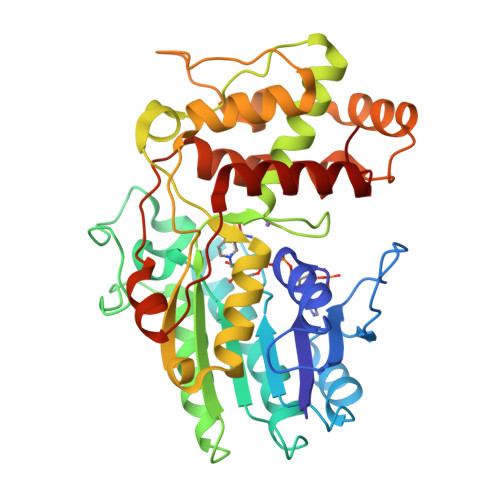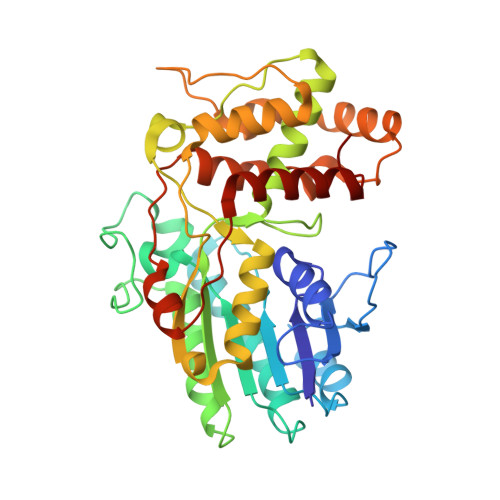The Crystal Structure of Progesterone 5{Beta}-Reductase from Digitalis Lanata Defines a Novel Class of Short Chain Dehydrogenases/Reductases.
Thorn, A., Egerer-Sieber, C., Jaeger, C., Herl, V., Mueller-Uri, F., Kreis, W., Muller, Y.A.(2008) J Biological Chem 283: 17260
- PubMed: 18032383
- DOI: https://doi.org/10.1074/jbc.M706185200
- Primary Citation of Related Structures:
2V6F, 2V6G - PubMed Abstract:
Progesterone 5beta-reductase (5beta-POR) catalyzes the stereospecific reduction of progesterone to 5beta-pregnane-3,20-dione and is a key enzyme in the biosynthetic pathway of cardenolides in Digitalis (foxglove) plants. Sequence considerations suggested that 5beta-POR is a member of the short chain dehydrogenase/reductase (SDR) family of proteins but at the same time revealed that the sequence motifs that in standard SDRs contain the catalytically important residues are missing. Here we present crystal structures of 5beta-POR from Digitalis lanata in complex with NADP(+) at 2.3A and without cofactor bound at 2.4A resolution together with a model of a ternary complex consisting of 5beta-POR, NADP(+), and progesterone. Indeed, 5beta-POR displays the fold of an extended SDR. The architecture of the active site is, however, unprecedented because none of the standard catalytic residues are structurally conserved. A tyrosine (Tyr-179) and a lysine residue (Lys-147) are present in the active site, but they are displayed from novel positions and are part of novel sequence motifs. Mutating Tyr-179 to either alanine or phenylalanine completely abolishes the enzymatic activity. We propose that the distinct topology reflects the fact that 5beta-POR reduces a conjugated double bond in a steroid substrate via a 1-4 addition mechanism and that this requires a repositioning of the catalytically important residues. Our observation that the sequence motifs that line the active site are conserved in a number of bacterial and plant enzymes of yet unknown function leads us to the proposition that 5beta-POR defines a novel class of SDRs.
Organizational Affiliation:
Lehrstuhl für Biotechnik, Department of Biology, Friedrich-Alexander-University Erlangen-Nuremberg, Henkestrasse 91, D-91052 Erlangen, Germany.



















